The fungus on the legs is a problem that bothers many.With itching, burning and unpleasant skin and nails is just a small part of it.The disease is dangerous with even more difficult complications to heal.However, it is possible to deal with the problem if you seriously treat the treatment of fungal infection (ringworm).
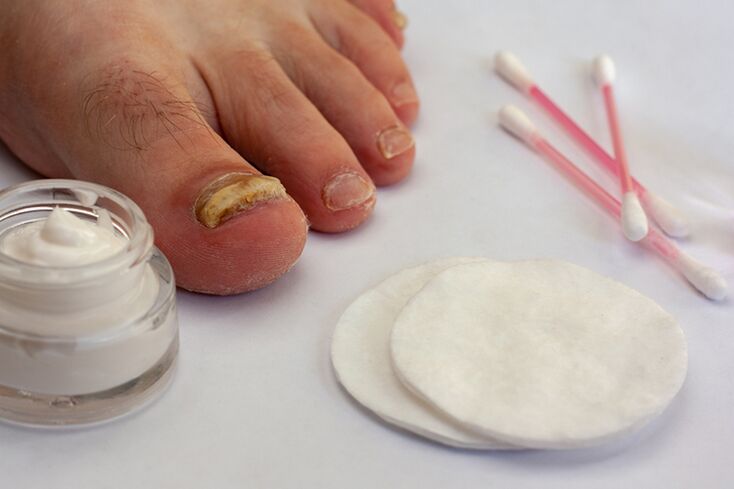
Why does the fungus occur at the feet?
Fungi are one of the types of infectious agents that affect the skin.These are difficult and extremely tenacious microorganisms.Therefore, fungal diseases require a serious and integrated approach to treatment.
Fungi have their favorite habitats on the skin.First of all, it is the skin of the toes and nails.The reason for this is understandable - the feet are usually inside the shoes, within which much moisture and dirt accumulates, and very hot.Therefore, the fungi that live on the feet have a lot of food and a favorable microclimate for propagation.Some types of complex fungi usually affect the skin and other types of mushrooms, for example, yeast and mold, prefer nail plates.Perhaps simultaneous infection with various types of fungi at once.
Contribute to the development of fingers on the fingers:
- Local and reduced local immunity;
- Poor feet hygiene;
- inconvenient and tight shoes;
- irregular change of socks or socks;
- using socks or a sock of synthetic materials that do not go through the air;
- regular hypothermia or overheating of the feet;
- Circulatory disturbances on the legs;
- varicose veins;
- Chronic diseases of the cardiovascular system, diabetes mellitus;
- a long course of treatment with antibiotics;
- Increased leg perspiration;
- Lack of vitamins and mineral elements in the body;
- mechanical damage to the skin, callus, foot trauma;
- Excessive physical weight on the legs;
- An irregular haircut of nails on the legs.
The most important of these factors are reduced immunity and blood circulation in the legs.An immunity decrease may occur due to different reasons.Generally, these are serious chronic diseases, especially infectious.In addition, immunity may decrease due to HIV, taking immunosuppressants with cancer.A violation of blood circulation on the legs is no less important for blood vessel diseases, blood, diabetes, smoking.
Stop mycosis can develop in men and women.In adults, they appear more often than in children.
Some types of fungi are constantly inhabited on the skin and are activated only in adverse circumstances, for example, Candida fungi.And other species are transmitted from person to person.The infection can occur when visiting the gym, bathtub, shower, if at the same time a person does not wear personal shoes.In addition, people who wear someone else's shoes or socks or allow others to wear them, subject to a significant risk of infection.Often, infection occurs when using the same towels, manicure supplies, etc.Factors that increase the probability of infection are cuts on the surface of the skin, deformation of nail plates.
Fingertip symptoms
The main symptoms of foot ringworm are itching and burning.Skin redness, small bubbles, increased peeling and thick skin, an unpleasant odor can also be observed.The first symptoms of skin ringworm can be confused with simple irritation, gratitude.
Symptoms of onychomycosis
The fungus can affect not only the skin but also nails.The last variety of ringworm is called onychomycosis.The main symptom of onychomycosis is a change in structure and nail type, its increase in fragility.The nail turns yellow, grooves and cracks appear on its surface, the nail plate thickens and deforms.If you do not treat treatment, the nail gradually exfoliates the bed and collapse of nails.
How is the fungus on your finger: photo
You should not make a diagnosis on your own, by photographs.The diagnosis should be made by a qualified dermatologist.
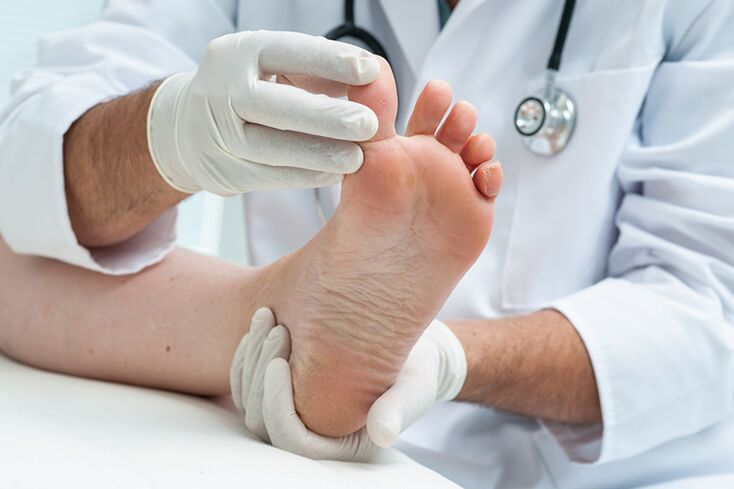
Only it can determine the type of fungus.To do this, it may not only need an external foot examination but also skin scraping laboratory tests.
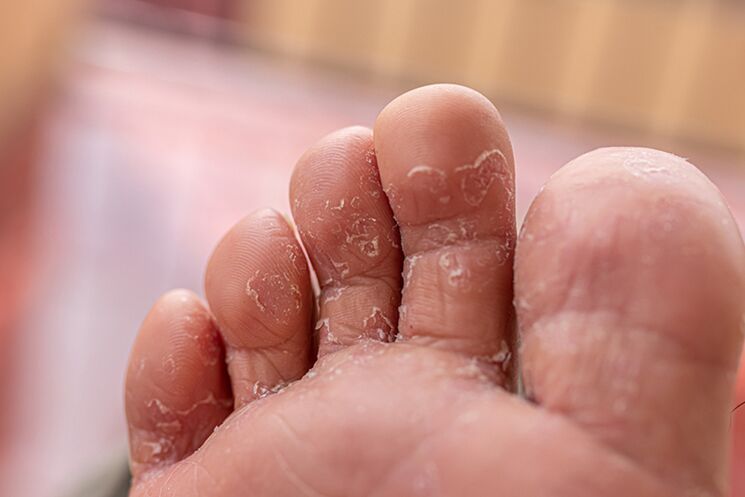
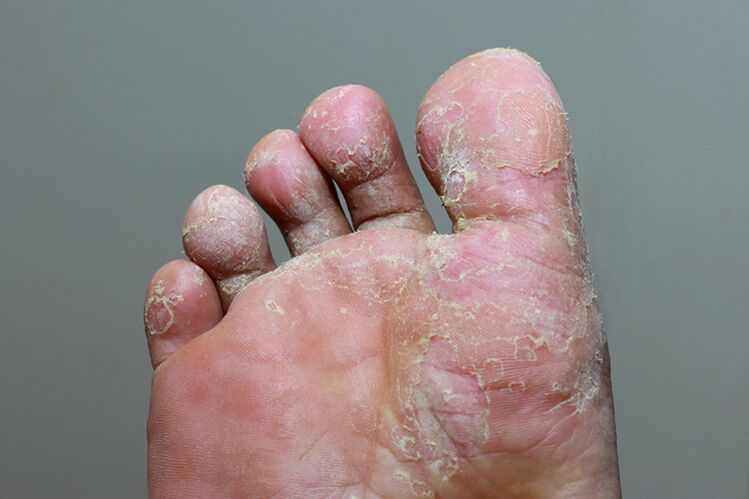

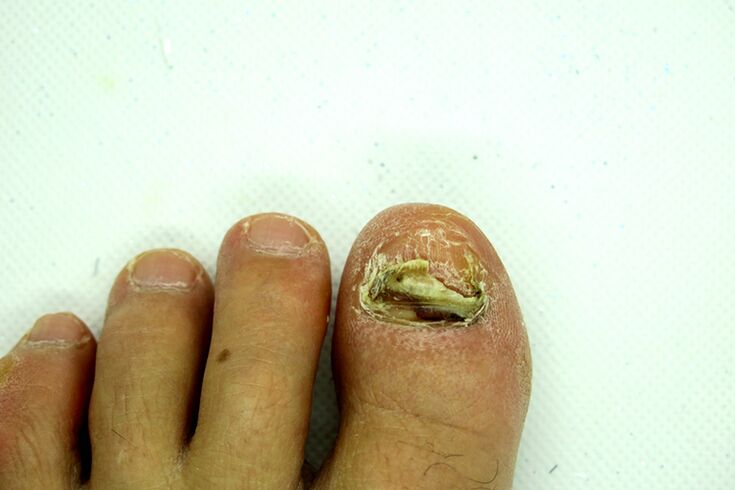
However, the presence of signals, at least remotely similar to the photographs portrayed in the photographs, is an occasion of concern and consult a doctor.
The treatment of the disease is comprehensive and is performed at home under the supervision of a doctor.
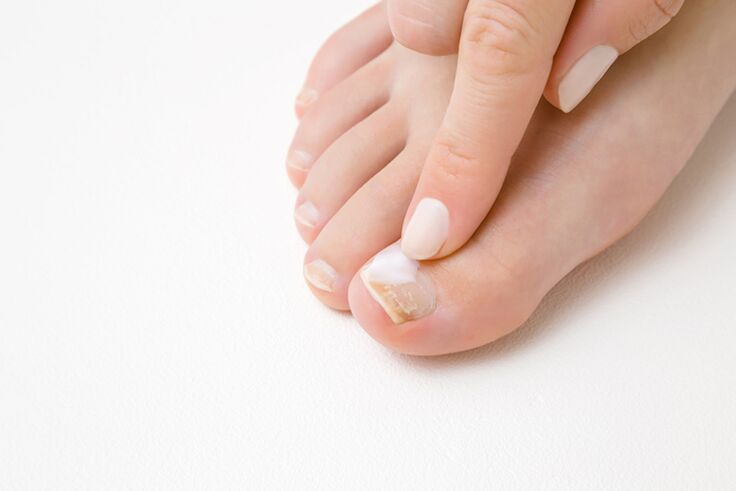
Fungus on the little finger
The fungus can affect the skin of any finger.But the small fingers in the leg are more vulnerable to the infection.The little finger in tight shoes is often compressed, due to which scratches occur on the skin and blood circulation is disturbed.With damage to the little finger, the disease develops very quickly, faster than any other nail.When infected with a little finger, the infection can quickly touch other fingers.
The fungus on the little finger is treated in the same way as the fungus in other areas of the skin.With the pinky finger onicomycosis, the most rational output may be the removal of your nail plate.This operation will not cause much inconvenience to the patient, because the nail on the little finger grows rapidly.However, although the nail does not grow again (this may take 3 to 4 months), antifungal medications are required to prevent reinfection.
How to treat the fungus on the fingers?
Treatment of ringworm should begin in the first alarming symptoms.First of all, you need to contact a dermatologist for diagnosis.Before starting therapy, it is necessary to establish the fact of the presence of ringworm and the type of pathogenic microorganisms.For this purpose, the doctor takes a scraping from the skin or will cut a piece of nail (with nail damage).Blood tests, blood for sugar are donated.Skin ringworm should be differentiated from:
- other infectious skin diseases;
- allergic reactions;
- Dermatoses caused by diabetes, vascular diseases, stress and nerve disease.
For the treatment of mycoses in the legs, local products (sprays, ointments, creams) are used more often.Only in severe cases can the doctor prescribe antimicotic tablets.More often used pills with fluconazole, itraconazole, terbinafin.
Treatment is based on the use of antimicotic agents.This type of medicine contains substances that kill mushrooms (fungicides) or interrupt their reproduction (fungistatic).
Which antimycotic agents are most used:
- Clotrimazole,
- Ketokonazole,
- Terbinafine,
- Nystatin,
- Mikonazol,
- Environment,
- Fluconazole.
Local medications with antibacterial, anti -inflammatory and keratolytic antibacterial properties are also used.Antibacterial agents are prescribed if suppuration occurs, ie the bacterial is linked to a fungal infection.Anti -inflammatory drugs deal well with unpleasant symptoms - itching and burning.However, they do not affect the cause of the disease - pathogenic microorganisms.Keratolytic agents include zinc, sulfur and sulfuric ointment.They accelerate the regeneration of skin tissues due to the acceleration of the exfoliation of the dead epidermis.
For the therapy of the ringworm of the stop, baths with anti -support agents - solutions of potassium permanganate, iodine, salt, soda in the diet, boric acid are also used.The baths are better before bed for 20 minutes.To prevent spore infection, you need to treat healthy areas of the skin with chlorhexidine, iodine, hydrogen peroxide, potassium permanganate.For the therapy of Tecomicosis, varnishes with antimicotic substances - looochil, exoderil, batrophen are used.These varnishes should be applied to the nail plate.
Ointments and creams should be applied to clean and pre -lavado skin with the frequency indicated in the product instructions.The ointment application area should be slightly larger than the visible damage area.To apply the nail to the nail plate, the nail should be cooked steam, the irregular edges should be sanded with a file and the nail surface should be degraded with an alcohol -containing solution.
In folkloric medicine, medicinal plant decoctions are used to get rid of mycosis in the legs - chamomile, callendula, sage, St. John weed, mint, vinegar, onion and lemon juices.
What to do if the fungus does not pass the finger?
The treatment of ringworm is a long and difficult process.Fungal microorganisms are very tenacious and, in a few days, it is impossible to get rid of them.Sometimes it takes many months of careful therapy.At the same time, it is impossible to interrupt therapy for a single day.Treatment of onychomycosis cannot be completed until a new healthy nail plate grows.
It is also important to consider other factors associated with disease development.Failure to comply with skin hygiene and the ideal feet temperature regime can reduce all therapeutic efforts to zero.This means that it is necessary to wash the surface of the skin regularly, avoid overheating or hypothermia.It is also important to avoid mechanical damage to the skin, excessive foot load, cuts and injuries.Overweight increases pressure on the feet;So if you suffer fullness, think about losing weight.
If the patient constantly wears infected shoes with a fungus, no powerful medicine will help here, because the place of dead microorganisms will immediately occupy new ones.Therefore, it is necessary to get rid of all factors that contribute to re -infection.You can't go to someone else's shoes, socks.The socks must be completely washed and regularly changed.The inner surface of the shoes should be completely sprayed with anti -inflicted agents.
With stubborn mycosis, it is necessary to analyze the general state of health.Perhaps this will help identify the causes of impaired immunity and blood circulation in the legs.Therefore, it is possible to undergo a complete examination and exclude problems with the heart, blood, vessels, organs of the endocrine system.
Finally, it is possible that microorganisms simply developed resistance to the antimicotic agent used.Then it will be necessary to change the medicine.Systemic antimicotic medications may be needed in tablets.The dose of medicines should be selected by a dermatologist.
























